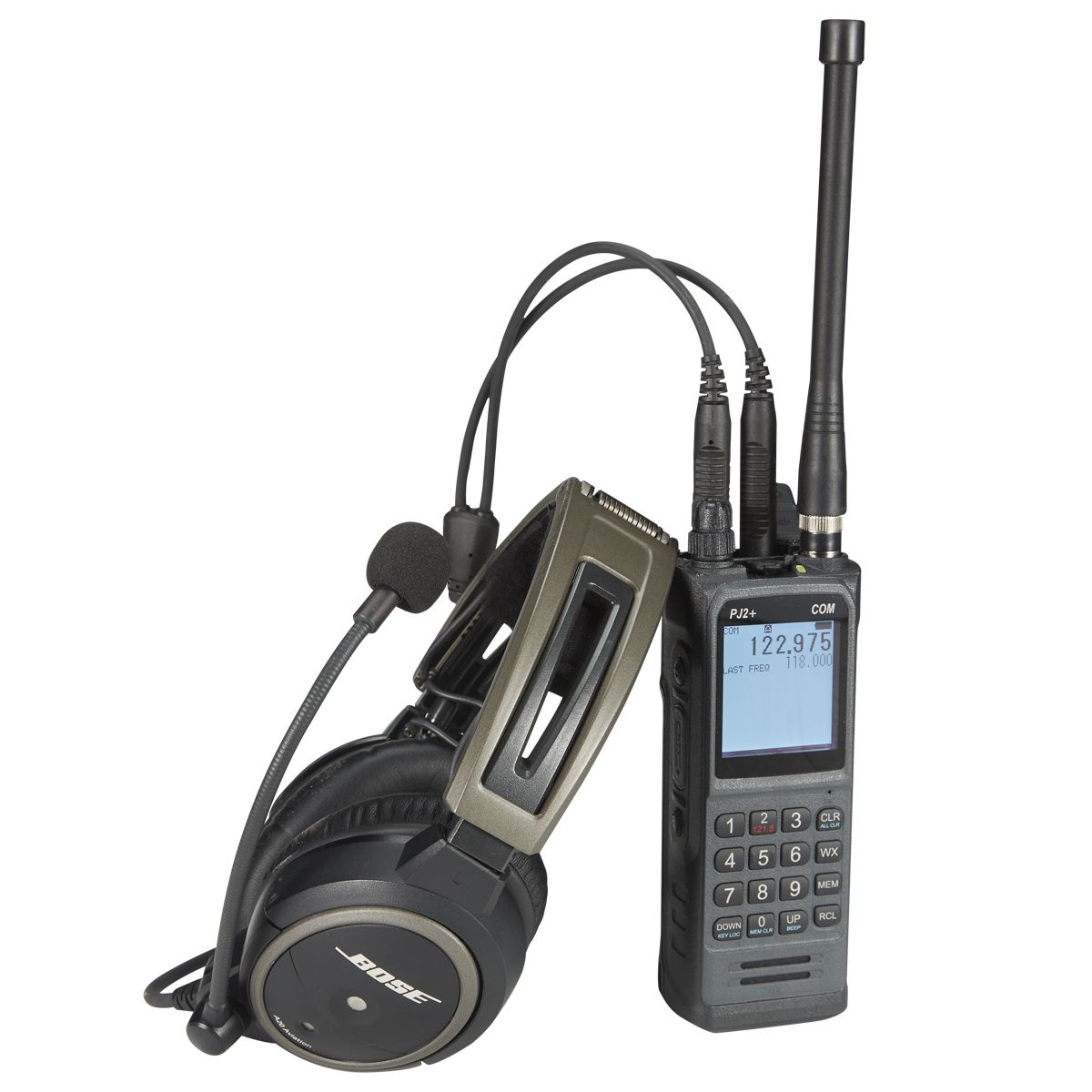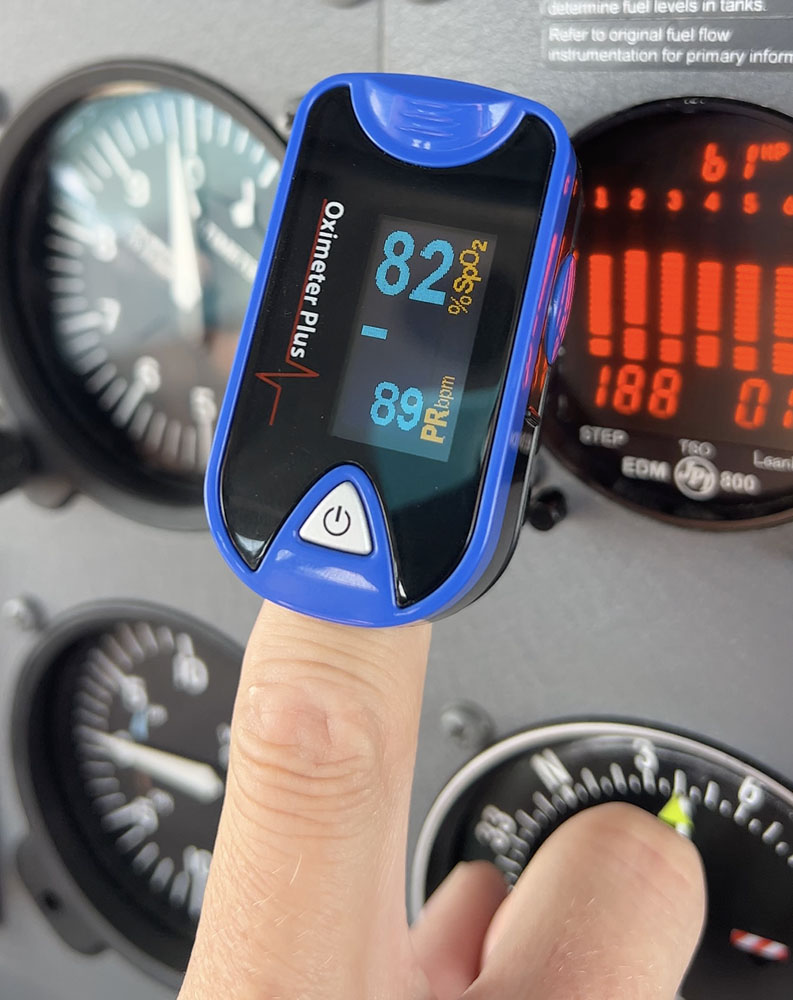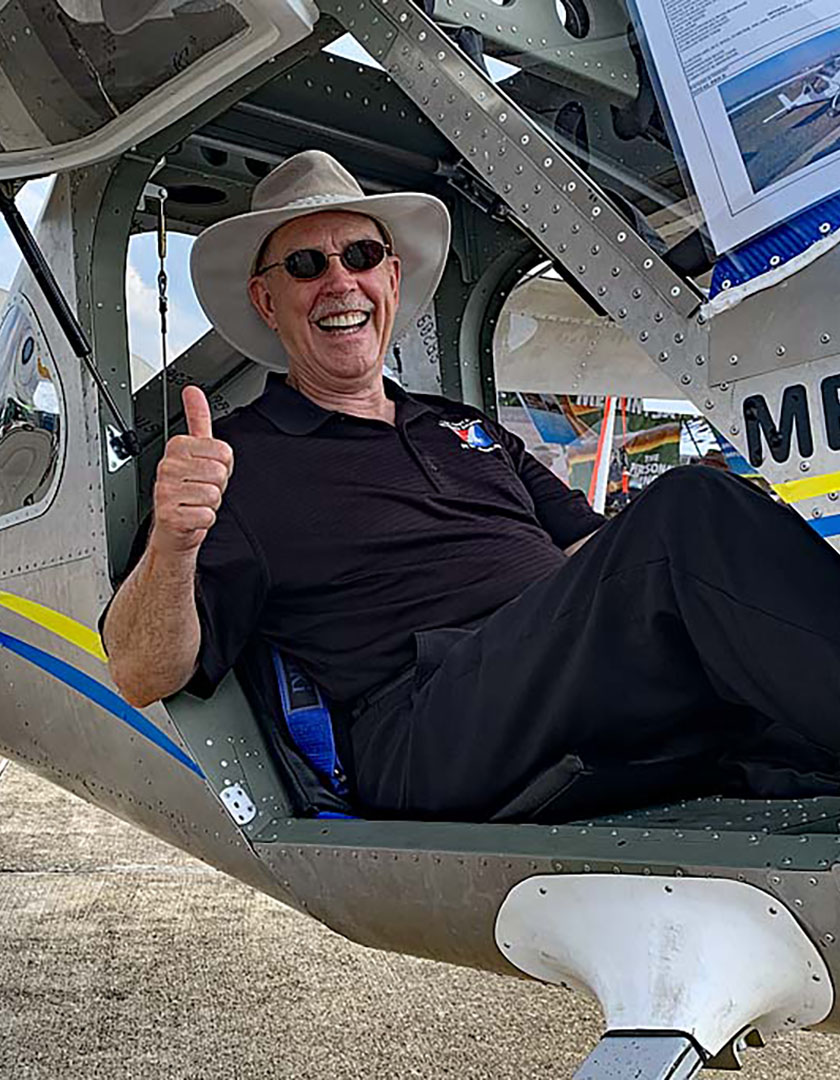Who is it for?
 First off, it’s important to understand that the ProFlight doesn’t replace the best-selling A20; it’s an addition to the Bose family of aviation headsets. Whereas the A20 is a traditional “around the ear” headset that works in almost any type of aircraft, the ProFlight is a lightweight, “in the ear” design that is aimed at turboprops and jets. It weighs less than 5 ounces but still has active noise reduction, so it’s a unique combination of long-term comfort and high quality noise cancelling.
First off, it’s important to understand that the ProFlight doesn’t replace the best-selling A20; it’s an addition to the Bose family of aviation headsets. Whereas the A20 is a traditional “around the ear” headset that works in almost any type of aircraft, the ProFlight is a lightweight, “in the ear” design that is aimed at turboprops and jets. It weighs less than 5 ounces but still has active noise reduction, so it’s a unique combination of long-term comfort and high quality noise cancelling.
Comfort
If you read “in the ear” and thought of rolled up yellow ear tips, we have good news - the ProFlight isn’t a traditional in the ear headset like that. While there are earbuds, they sit in the bowl of the ear, more like sports earbuds. Crucially, they do not go all the way into the ear canal. This sounds like a small thing but it’s actually a big deal - there is less pressure, making it a lot more comfortable on a long flight and you don’t have to roll up ear tips. The silicone material also lasts a lot longer, and three sizes of earbuds come standard so you can get a perfect fit (we do recommend you experiment with this).
 Another Bose innovation we like is the use of side pad cushions. These rest on your head, just above your ears, and distribute the weight more evenly. They also keep the earbuds stable, so they aren’t constantly being pulled out of your ear when you turn your head. Once we put the ProFlight on, it was rock solid.
Another Bose innovation we like is the use of side pad cushions. These rest on your head, just above your ears, and distribute the weight more evenly. They also keep the earbuds stable, so they aren’t constantly being pulled out of your ear when you turn your head. Once we put the ProFlight on, it was rock solid.
In our experience, two main things make a headset uncomfortable - high weight and lots of side pressure. With a weight almost 70% less than traditional headsets and the in-ear design, the ProFlight addresses both issues. There is almost no squeeze on your head, and glasses or sunglasses won’t interfere at all with the headset, which is really nice.
Noise cancelling
Bose is famous for having some of the best active noise reduction (ANR) on the market, and you’ll find that here as well. Unique to the ProFlight, though, there are three levels of active noise cancellation, so you can tailor the experience to different airplanes - maybe a turboprop one day and a jet the next. The low setting is essentially ANR off, medium would be well suited for a jet, and high would be best in a turboprop.
How does it compare to the A20?
 One question we’ve heard a lot is how the ProFlight compares to the A20, which has been the most popular headset in aviation for many years now. To find out, we took both flying in a Pilatus PC-12 (turboprop) and a Cessna Citation (jet). In the Citation, both Bose headsets were excellent, canceling the higher frequency wind noise and keeping the cockpit audio very clear. There really isn’t a wrong answer here, although it’s right in the sweet spot for the ProFlight.
One question we’ve heard a lot is how the ProFlight compares to the A20, which has been the most popular headset in aviation for many years now. To find out, we took both flying in a Pilatus PC-12 (turboprop) and a Cessna Citation (jet). In the Citation, both Bose headsets were excellent, canceling the higher frequency wind noise and keeping the cockpit audio very clear. There really isn’t a wrong answer here, although it’s right in the sweet spot for the ProFlight.
In the Pilatus, the A20 was slightly better than the ProFlight in terms of noise cancelling, but the difference was actually pretty minor. We would have no reservation flying with ProFlight in a turboprop every day - especially if you fly longer legs where a full coverage headset can get uncomfortable after a few hours. Go with ProFlight if comfort is your main goal; choose A20 if you fly a louder airplane.
Does it work in piston airplanes?
For our final test, we decided to push ProFlight beyond what it was really designed for - would it be quiet enough to work in a piston airplane? After a test flight in a Cessna 182, the A20 was the clear winner, which is no surprise given the design of the two headsets, but the ProFlight performed better than expected. If you regularly fly jets but occasionally fly a piston airplane, we think the lighter weight ProFlight would work fine. If you’re flying mostly piston airplanes, however, we suggest the A20.
Advanced tech features
 Besides the great comfort and noise cancelling, Bose has packed this headset with some high end audio features. One in particular that pro pilots will really like is the Talk-through tap control. This allows the pilot to talk to cabin crew or passengers who aren’t wearing a headset - but without removing the headset. Just double tap on the earbud and you can hear the cockpit environment clearly. It’s really simple once you know how to do it and it works great.
Besides the great comfort and noise cancelling, Bose has packed this headset with some high end audio features. One in particular that pro pilots will really like is the Talk-through tap control. This allows the pilot to talk to cabin crew or passengers who aren’t wearing a headset - but without removing the headset. Just double tap on the earbud and you can hear the cockpit environment clearly. It’s really simple once you know how to do it and it works great.
There is also full function Bluetooth® connectivity with smartphones and tablets, so you can listen to music, make a phone call or get audio alerts from your favorite iPad app. We used it with SiriusXM Radio in flight and the audio quality is just what you’d expect from Bose - outstanding. Like the A20, you can choose to auto-mute or mix external audio with the intercom. There’s also a useful feature that is accessed with the free Bose Connect app. This allows two headsets to share a single audio source, so both pilot and co-pilot could be connected to the same iPad. It’s another thoughtful feature for two-pilot flight decks.
 The mic can also be swapped easily from left to right without tools - this is perfect for pilots who might move back and forth between the left seat and right seat.
The mic can also be swapped easily from left to right without tools - this is perfect for pilots who might move back and forth between the left seat and right seat.
Conclusion
The Bose ProFlight Aviation Headset is a great headset, with innovative comfort features and famous Bose quality. The real question is whether it’s right for you and the type of flying you do. If you’re flying a piston airplane, or even a particularly noisy turboprop, it may not be. The A20 is still a great option for these airplanes, and it’s not going anywhere. If you fly a quieter turboprop or a jet, especially if you spend some long days in the cockpit, we think the ProFlight is a major advancement in comfort. It is fully TSO’d and comes in a wide variety of plug options - including twin plug, 6-pin/Lemo, and 5-pin/XLR - so it’s well-suited to airline, corporate or owner-pilots. ProFlight is available to order now, and is expected to ship in mid-July.
You can watch our video PIREP below:



